If you only have eight hours to spend in a HUGE city, what do you do? Tom and I visited two museums on Djurgaarden in Stockholm, Sweden. Perhaps it wouldn’t be your choice of a great day, but Tom and I were happy with our choice.

Djurgaarden is an island that houses pretty much all the museums in Stockholm. The island has ABBA The Museum, the Children’s Museum and the Nordic Museum. It also has a big amusement park and lots of green space and hiking trails.
We started off our day at the museums with a problem. How to get there. We thought about taking a taxi, but taxis are very expensive in Stockholm and the taxi drivers are aggressive. The ship was parked a long way from Djurgaarden. We finally decided on the Hop On, Hop Off Sightseeing Bus. Not only would it take us to Djurgaarden, but we could also see a little more of the city on our way back to the ship. The bus also took us directly to our cruise ship so we wouldn’t have to walk a long way to find it.
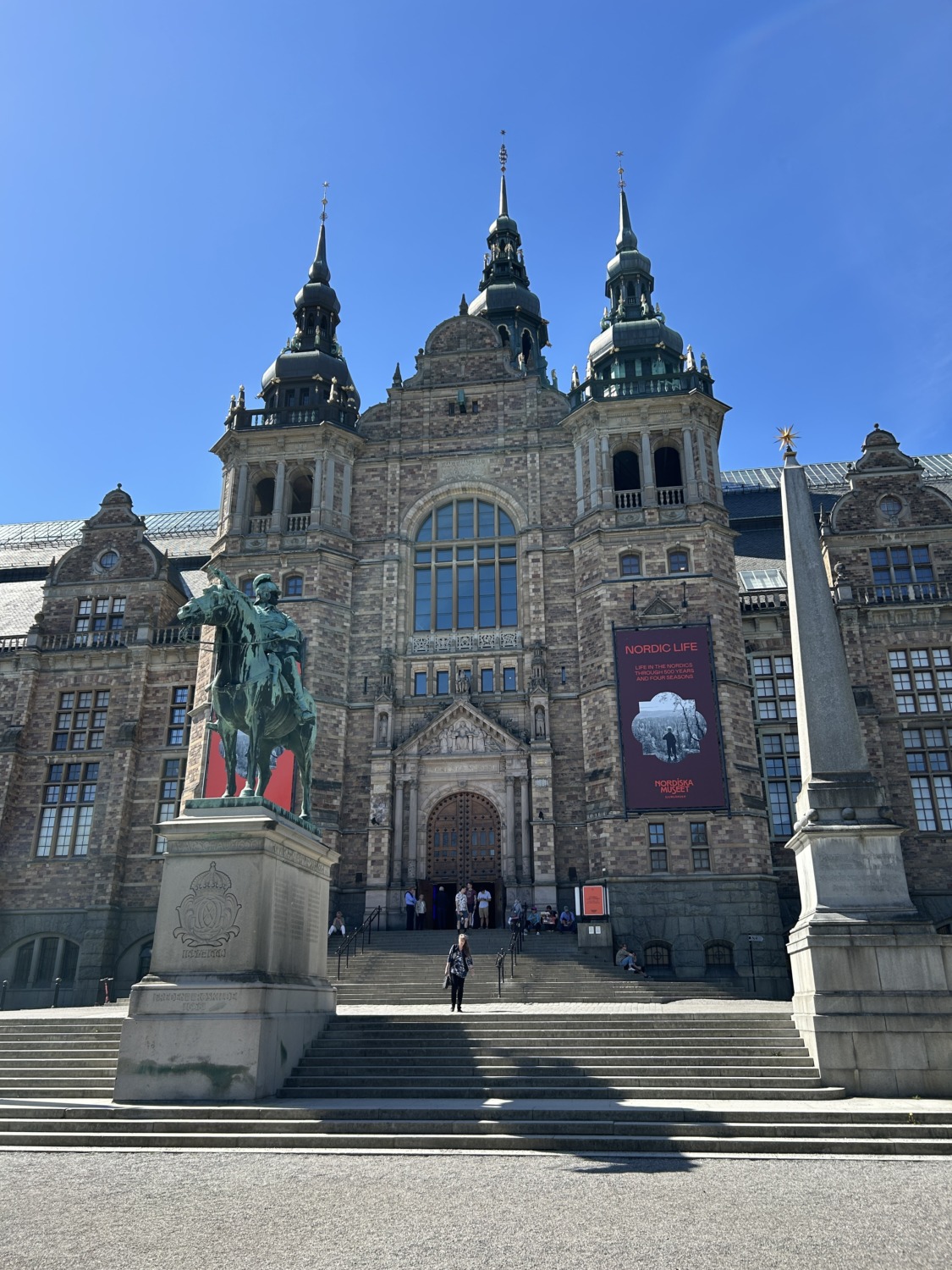
We got on the Sightseeing Bus a little after nine and arrived at the first of the two museums just a little before 10, when it opened. Tom and I might have gotten there a little sooner, but we followed the signs once we got off the bus and ended up going through a cemetery to get to the museum. We also walked all the way around the Nordic Museum, which is a very large, impressive building.
Our first museum was the Vasa Museum. The Vasa was a warship built by the king of Sweden, Gustavas Adolphus, in 1628. The ship sank after sailing roughly 1,400 yards into her maiden voyage on August 10, 1628. She fell into obscurity after most of her valuable bronze cannons were salvaged in the 17th century, until she was located again in the late 1950s in a busy shipping area in Stockholm harbor. The ship was raised with a largely intact hull in 1961.
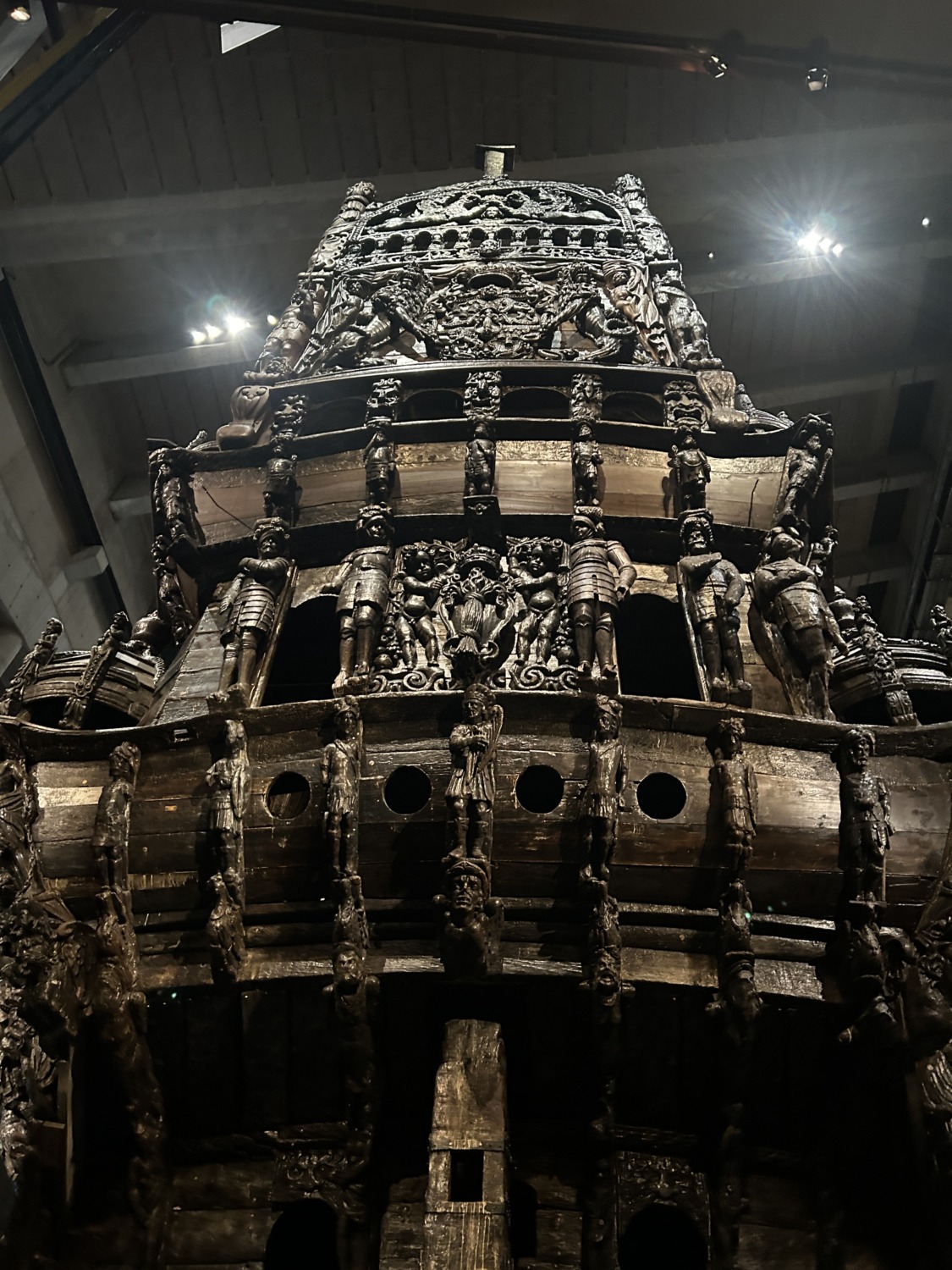
Apparently, the ship was not built with a large enough area for ballast. King Gustavas Adolphus kept adding more and bigger cannons to the design of the ship. It rocked in an alarming way even before they took it out of port. As soon as the ship sailed out of port and the wind caught the sails, the ship leaned and started taking on water through the cannon ports. Soon the whole ship was on its side and taking on water fast.
An inquest was held to find out who was at fault for the ship’s sinking. Basically, the inquest blamed the shipwreck on the person who designed the ship, Henrik Hybertsson. Fortunately Mr. Hybertsson had died shortly before the ship was finished. The other person at fault was the king, because he kept adding weight to the top of the ship, but no one is going to accuse the king of causing the shipwreck. So no one was ever formally charged.
Dedicating a whole museum to your greatest failure takes a certain amount of confidence and humor as a nation. The Vasa Museum celebrates the preservation of the ship, both in the water and out. It is the largest intact preserved ship of its kind in the world. Archaeologists worked for years excavating the artifacts from the ship. In order to preserve the wood, the ship was sprayed with polyethylene glycol for 17 years and then allowed to slowly dry out.
The centerpiece of the Vasa Museum is the preserved ship. The ship is surrounded by reproductions of brightly covered carvings and carefully preserved artifacts. We saw sails from the ship made of hemp and linen. There were items that had been stored in seamen’s chests. There is an excellent movie about the history of the Vasa, and it shows in different languages every twenty minutes. We arrived just in time to catch the movie narrated in English.
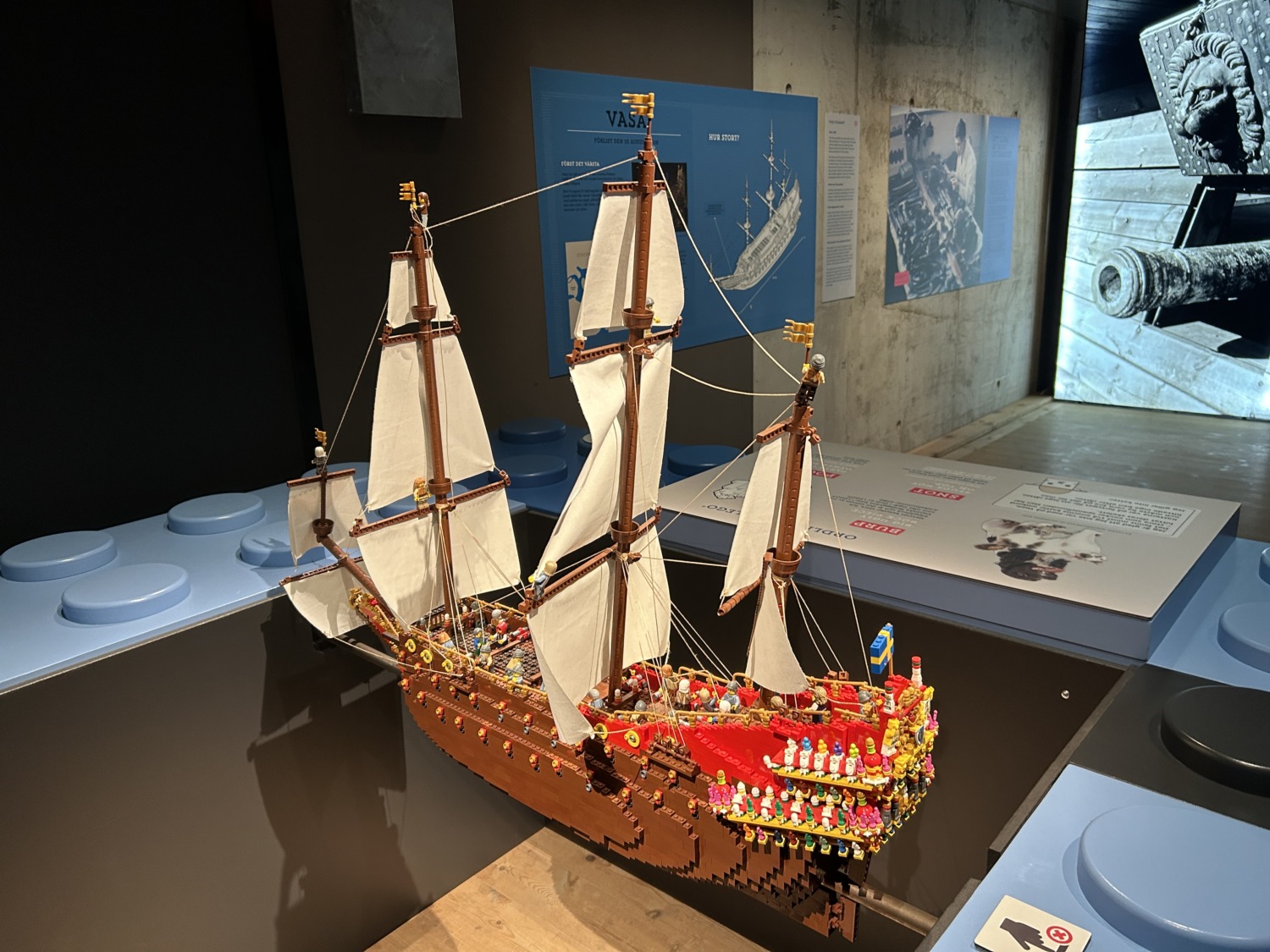
One other exhibit that we really enjoyed at the Vasa was a Lego Brickwrecks exhibit. Someone had built replicas of several famous shipwrecks out of Legos. The Brickwrecks were remarkably detailed and beautiful. There was one of the Vasa, one of the Titanic, and one of the Rena, a container ship that wrecked in 2011.
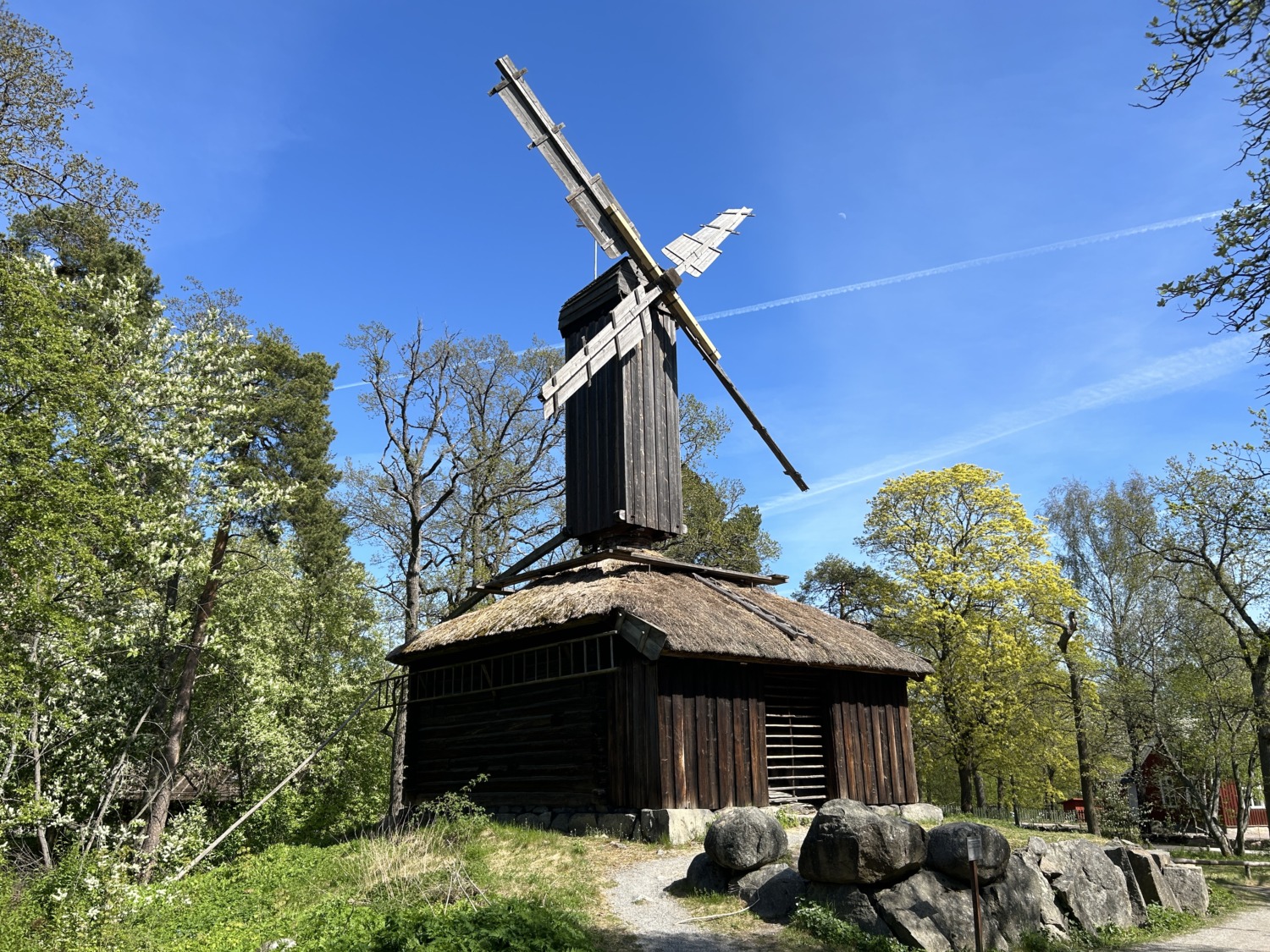
The second of our two museums was Skansen, the oldest open-air museum in the world. Skansen showcases the houses, traditions, and animals of Sweden. We expected something like the Norske Folkemuseum in Oslo, but Skansen was much better because there were people doing living history and interpreting the history of the buildings.

Unfortunately, because of our time limit, we were only able to spend two hours exploring Skansen. It would have been better to have a full day there. But we made the most of our time. We found some Swedish kanelbulle in the town bakery and had that for lunch.
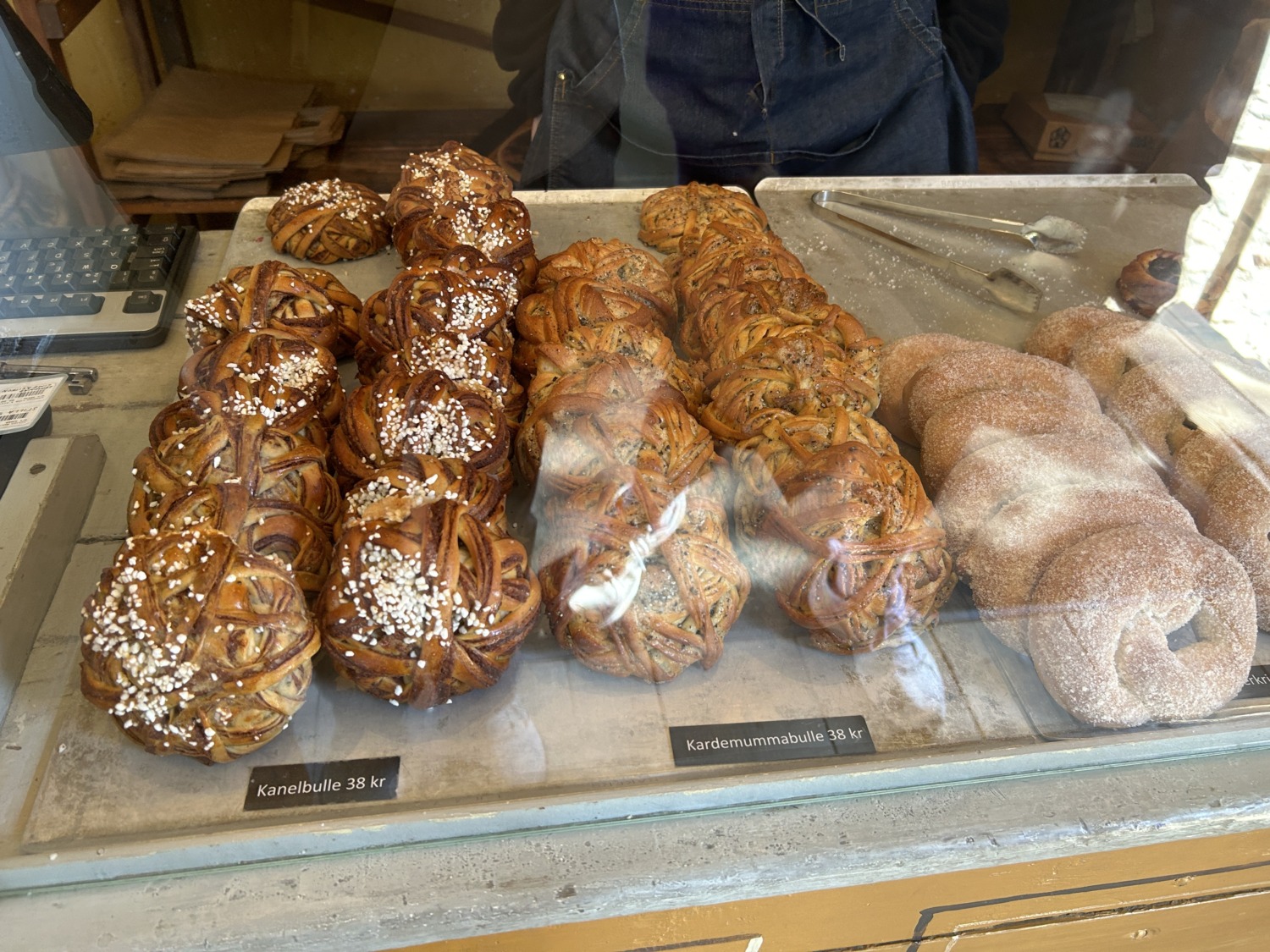
Kanelbulle is like a cinnamon roll with the cinnamon mixed all the way through it and then braided and topped with granulated sugar. The Swedes have a tradition of Fika, which is an afternoon coffee and sweet break that must be taken with other people. Fika is a time to recharge, physically and socially, for the rest of your day. An excellent tradition well worth instituting in the United States.

After enjoying our Fika, Tom and I spent time wandering around the buildings of Skansen. We talked to a 1930’s farmer, a Finnish settler from the 1700’s, and a townswoman waiting for the bus in 1920. Tom spent quite a bit of time talking to a 1920’s mechanic. The mechanic turned on all the machines in his building and then showed Tom a few of the things that most people don’t get to see. I’m not sure how many of the buildings had people in them because we had so little time, but it was wonderful to see how so many different people lived.
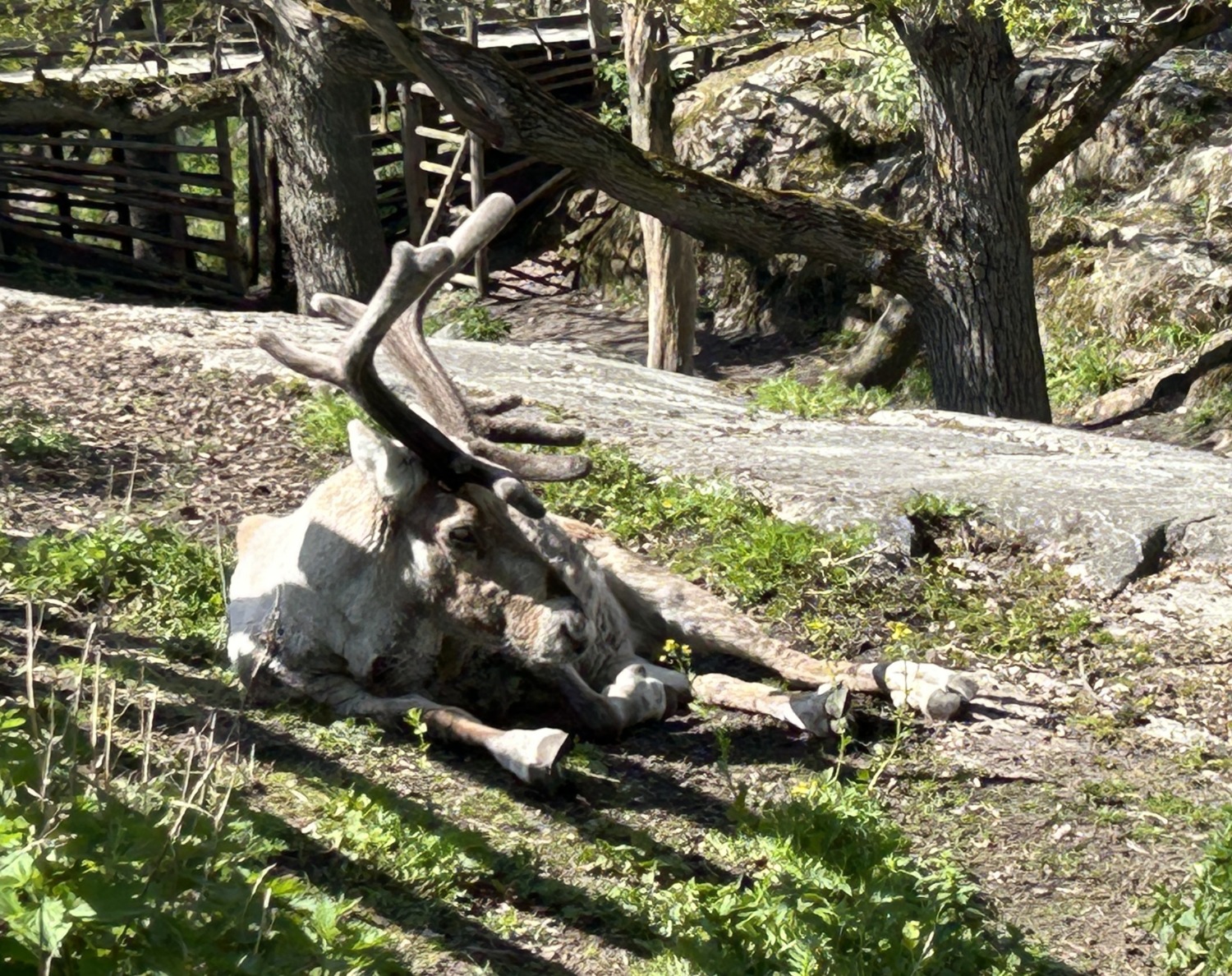
I wanted to see the Nordic animals, so we headed over to the zoo area. There were reindeer, brown bears, a wolverine, lynx, wild boar, and European bison. We even saw a very silly peacock who was attacking the grill on a golf cart because he could see another peacock in his reflection. On our way back to the entrance/exit we passed buildings dating from 1400 to 1960. We wanted to stay and see more, but the ship pulls out at a certain time whether we are on board or not.
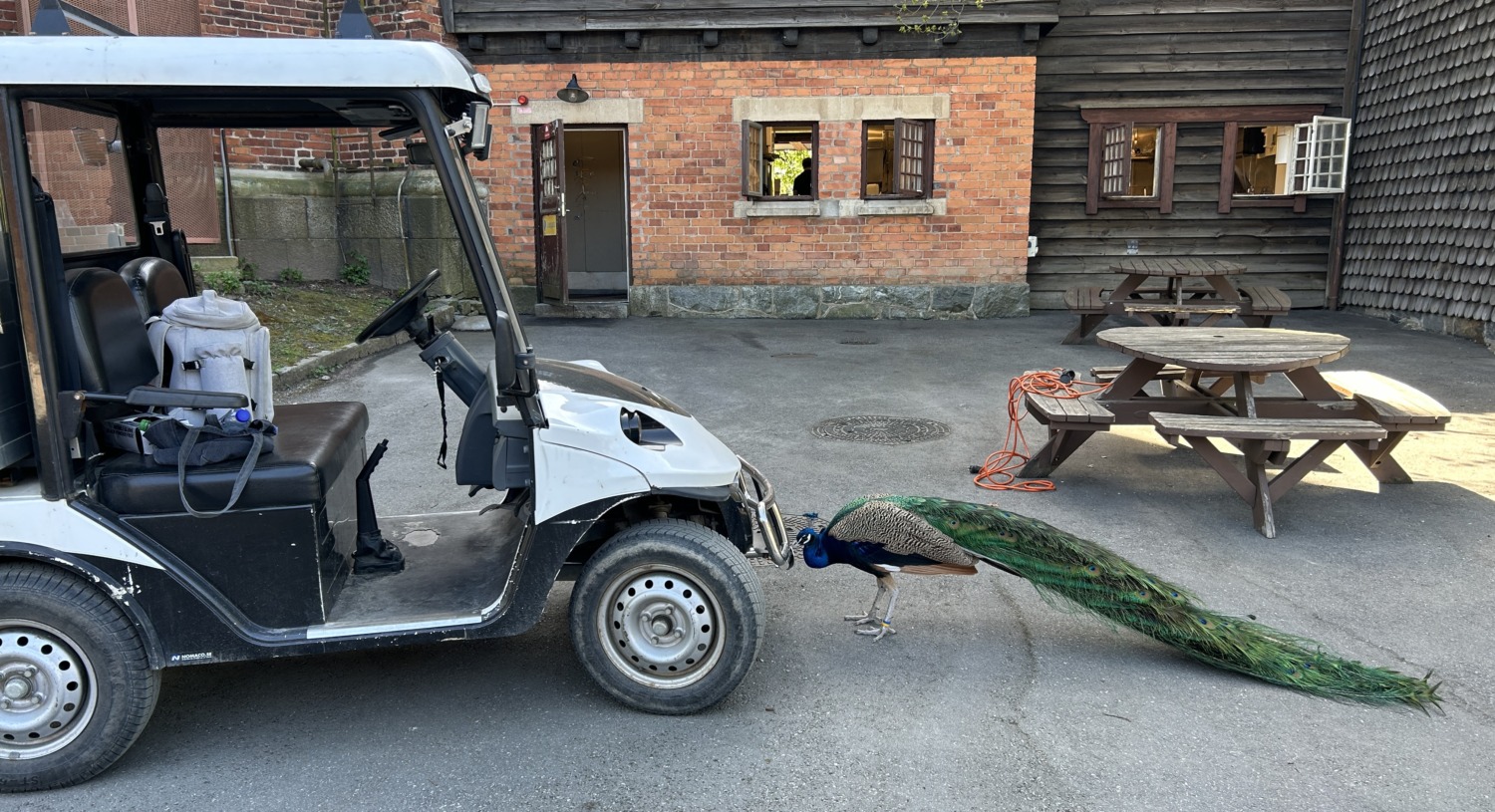
We caught the Hop-On, Hop-Off Bus in front of Skansen and took the long, scenic route back to the ship. Although we didn’t get off, we saw the royal palace, the city hall, the Gamle Stan (old town) and the shopping district. There was so much to see and do that it was a little overwhelming. I’m not sure how long you need to really feel like you have “done” Stockholm, but it would certainly be more than eight hours.
Tom and I enjoyed both of the museums we visited. We were sorry to miss seeing the Nordic Museum. We also would have enjoyed walking around Gamle Stan. Maybe next time.
